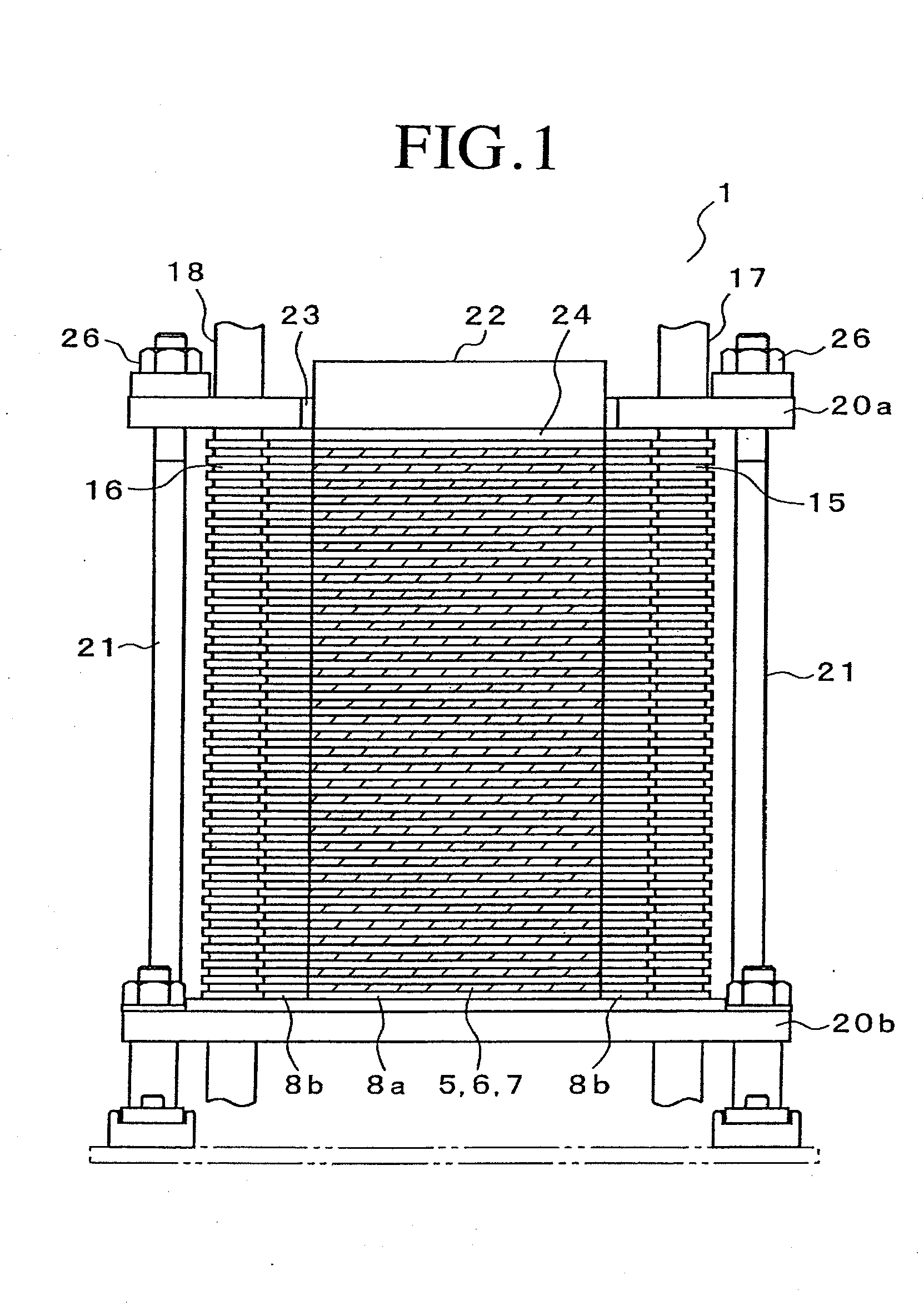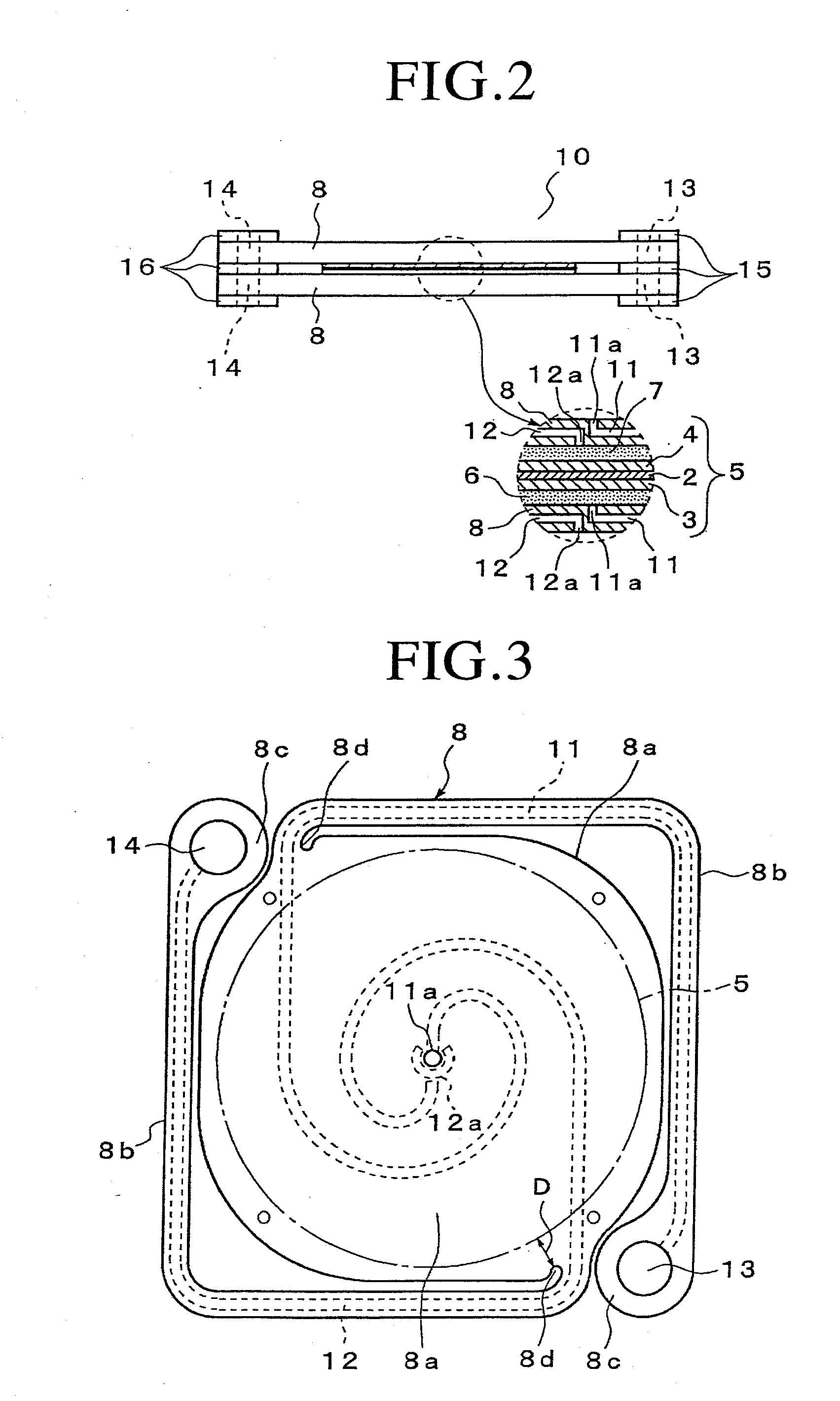Plate-laminated type fuel cell
a fuel cell and plate-laminated technology, applied in the direction of fuel cells, solid electrolyte fuel cells, cell components, etc., can solve the problems of 4 structural problems, so as to prevent damage to the power generation cell, reduce local deformation of the arm section under load at high temperature, and the length of the arm section can be sufficien
- Summary
- Abstract
- Description
- Claims
- Application Information
AI Technical Summary
Benefits of technology
Problems solved by technology
Method used
Image
Examples
Embodiment Construction
[0034]An embodiment of a solid oxide fuel cell according to the present invention will be described below with reference to FIGS. 1-3.
[0035]FIG. 1 shows a configuration of a plate-laminated type solid oxide fuel cell 1 (fuel cell stack 1) according to the present invention; FIG. 2 shows an enlarged view of a part of FIG. 1; and FIG. 3 shows a structure of a separator 8.
[0036]As shown in FIG. 2, a stack unit 10 comprises a circular power generation cell 5 in which a fuel electrode layer 3 and an air electrode layer 4 are arranged on both surfaces of a solid electrolyte layer 2, a fuel electrode current collector 6 on the outer side of the fuel electrode layer 3, an air electrode current collector 7 on the outer side of the air electrode layer 4, and two separators 8 on the outer side of each of the current collectors 6 and 7.
[0037]Among power generating elements mentioned above, the solid electrolyte layer 2 is formed of stabilized zirconia (YSZ) doped with yttria, and the like. The ...
PUM
| Property | Measurement | Unit |
|---|---|---|
| shape | aaaaa | aaaaa |
| flexibility | aaaaa | aaaaa |
| elastic deformation | aaaaa | aaaaa |
Abstract
Description
Claims
Application Information
 Login to View More
Login to View More - R&D
- Intellectual Property
- Life Sciences
- Materials
- Tech Scout
- Unparalleled Data Quality
- Higher Quality Content
- 60% Fewer Hallucinations
Browse by: Latest US Patents, China's latest patents, Technical Efficacy Thesaurus, Application Domain, Technology Topic, Popular Technical Reports.
© 2025 PatSnap. All rights reserved.Legal|Privacy policy|Modern Slavery Act Transparency Statement|Sitemap|About US| Contact US: help@patsnap.com



